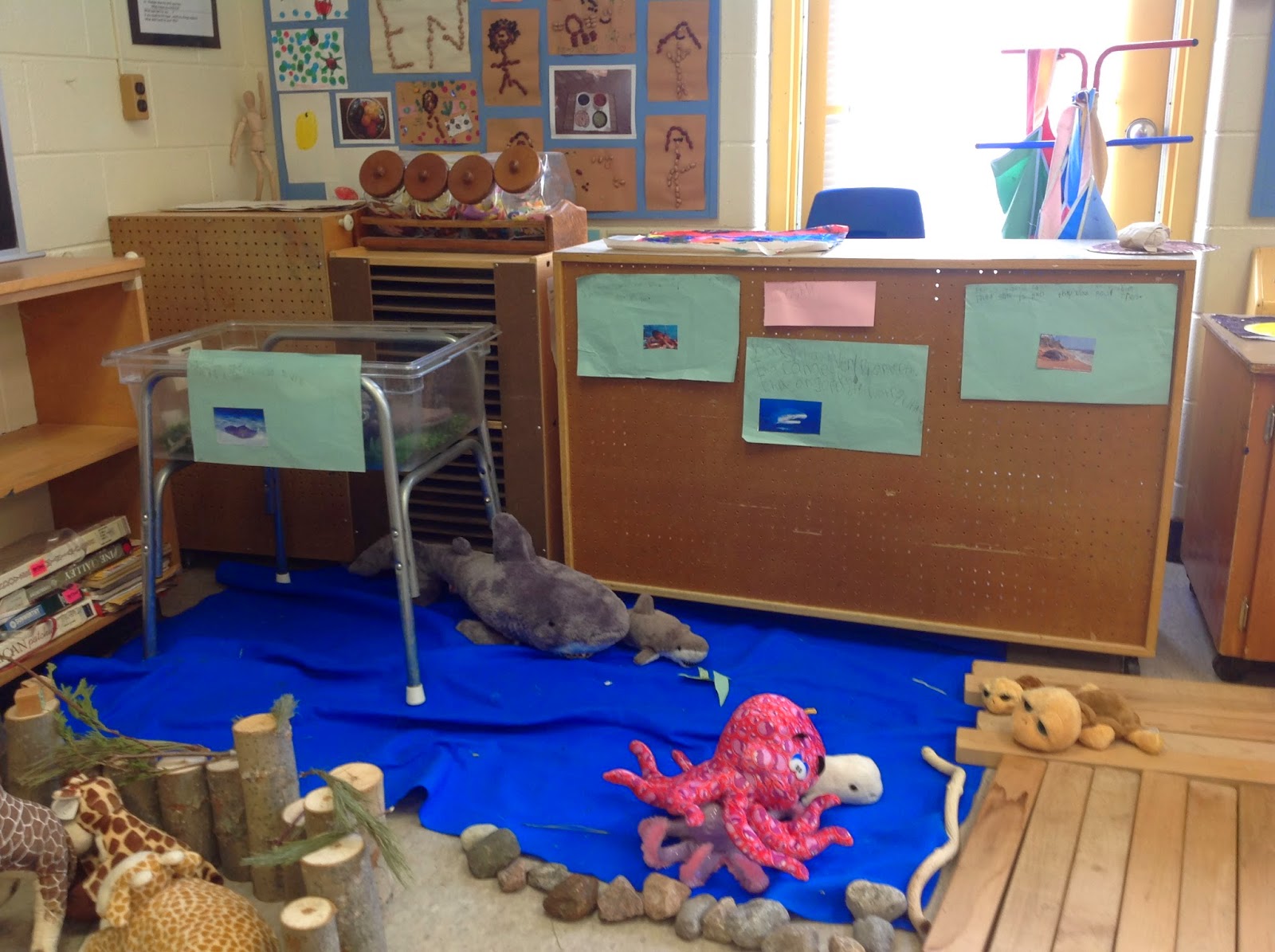Interest in animals has been a prevalent theme in our room all year. After discussing this constant interest Mrs. Bell and I decided that maybe the children would like to transform the dramatic play center into a zoo. We brought it to the group to see if they liked the idea. Did they ever! We recorded their brainstorms of what should be in the zoo.
The very next day we had a TON of stuffed animals come in for our zoo. We had giraffes, elephants, gorillas, stingrays, kolas, etc. We were not prepared for how big our zoo would become. This was a popular inquiry with all the children! Everybody wanted to participate in creating the zoo.
Making the entranceway
Making a cage with straws and connectors
Making another cage
From our discussions some children pointed out that we needed tickets to get into the zoo. Interested students researched what tickets should have on them. They decided the tickets should include: the name of the place, the price, and a picture of an animal. They set to work making tickets for our classroom zoo.
And of course the tickets must be sold at a ticket booth
"Zoo Entrans 10 cents"
Some children wanted to make animal masks. We researched animal features by looking through books and on the internet.
One of the features of a zoo that was mentioned during our discussions was the name of the zoo. To come up with our name we had children volunteer their suggestions, then we put it to a vote, and recorded the results using a tally.
Toronto Zoo or "Toroto Zoo" was the winning name for our zoo.
We discussed the different habitats that the animals lived in. We looked at pictures and read about the habitats on the internet and in books. The children created habitats for the animals.
Consulting a book when constructing an iceberg for the polar bears
H.M said that zoos have information plaques that tell us about the different animals. So many children wanted to write about the animals. Some of our friends that have little interest in writing, who struggle to write one sentence even with guided support, were independently writing multiple sentences as they wrote down all the facts they knew about particular animals.
The children also discussed how the animals at the zoo are separated into different areas depending on where they live in the world. This led to a discussion on how to group our animals. We had talks about the climate and features of Africa, Canada, Asia, the jungle, the savannah, the rainforest, the ocean. The children had such a rich discussion as to where each animal should be placed and why.
Information plaques
Information plaques displayed in each area.
A.A mentioned that when you go to the zoo you get a map. We had several children really interested in maps. This led to a mini inquiry into maps. We brought in several different maps and with interested students we discussed the features we saw on maps. One feature they were particularly interested in was a legend. We talked about the purpose of a legend. Then the children went to work creating maps for our classroom zoo. R.F: "I made two paths on my map. The blue line is the one you follow if you want to go see the animals that live in cold climates and the red line is the one you follow if you want to go see the animals that live in hot climates. I wrote that down in the legend." Wow!!
Finally the zoo was finished. Behind the ticket booth is the swamp, then the jungle, and then Canada for the Grizzly Bears.
The jungle area
The penguin habitat
Africa
Our ocean area
Asia
This zoo became bigger than what we had anticipated. It took up half our classroom and the children worked so hard on it that we just had to share it with our community. We invited other classes and parents to come visit our zoo.
The children who wrote a plaque read it to the visitors.
We finished off our zoo inquiry with our class trip to the Toronto Zoo.
We would say they enjoyed themselves!!
This topic of inquiry and all the activities pertaining to it was driven by the children. We, the educators, did not pre-plan this, yet during this inquiry there were several curriculum expectations covered (even some from higher grades!):
Science - Living things, habitats, research, technology
Math - Money, Sorting (grouping animals), Tallying (voting), Spatial (maps)
Language - Oral Language, Reading, Writing, Research Skills
Visual Art
It can't be stated enough: when the program is guided by the children's interests with real purpose at its core, motivation and learning happen naturally!

























No comments:
Post a Comment